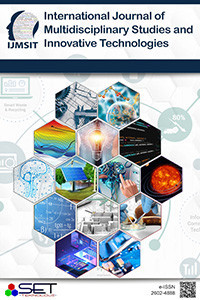IT Security Trends for E-government Threats
IT Security Trends for E-government Threats
IT security trends, Secure Software Development Web Applications Security, E-government security,
___
- [1] Salah-ddine Krit and Elbachir Haimoud, ”Review on the IT security: Attack and defense”, IEEE, 2016
- [2] Temiz Semanur, Yilmaz Bülent, “Awareness of Information Security in Information Centers: Sample of Academic Libraries in Ankara”, 2013
- [3] Richardson R.,”CSI Computer Crime and Security Survey” 2008, http://www.kwell.net/doc/FBI2008.pdf
- [4] Spiekermann S., Lorrie Faith Cranor, ”Engineering Privacy,” IEEE Transactions on Software Engineering, pp. 67-82, 2009
- [5] Microsoft Security Lifecycle (SDL) Version 3.2
- [6] Software Assurance Maturity Model, “A Guide to Building Security into Software Development Version. 1.0”,
- [7] IBM Internet Security Systems, X-Force 2008 Trend and Risk Report, January 2009
- [8] Christos G. Panayiotou, Georgios Ellinas, Elias Kyriakides, Marios M. Polycarpou, “Critical Information Infrastructures Security”, 9th International Conference, CRITIS 2014, Limassol, Cyprus, October 13-15, 2014.
- [9] Igure V., Laughter S., Williams R., “Security Issues in SCADA Networks”, Computer and Security, p496-506, Elsevier, 2009
- [10] Madhavi Dhingra, Manisha Jain, Rakesh Singh Jadon, ”Role of Artifical Intelligence in Enterprise Information Security: A Review ”, IEEE, 2016
- [11] Organisation for Economic Co-operation and Development, Public Management Service, PUMA 16/ANN/Rev1 (2001). “E-Government: analysis framework and methodology” http://search.oecd.org/officialdocuments/publicdisplaydocumentpdf/?cote=PUMA(2001)16/ANN/REV1&docLanguage=En (Link at 21-October-2017)
- [12] Brian M. Bowen, Ramaswamy Devarajan, Salvatore Stolf (2012). “Measuring the Human Factor of Cyber Security”. Homeland Security Affairs, Supplement 5, article 2.http://academiccommons.columbia.edu/catalog/ac%3A142664
- [13] http://www.information-age.com/uber-hack-affects-2-7m-uk-customers-123469804/
- ISSN: 2602-4888
- Yayın Aralığı: Yılda 2 Sayı
- Başlangıç: 2017
- Yayıncı: SET Teknoloji
Photodegradation in the presence of NH3 / TiO2 nanoparticles
UNITY 3D Oyun Yapma Simulatörü ile 3D Oyun Tasarımı
FDM ile Üretilen PET-G Malzemenin Üretim Sıcaklığı ve Hızının Boyutsal Doğruluğa Etkisi
Ebru AYDINDAĞ BAYRAK, Pınar KIRCI, Tolga ENSARİ
Sanayi 4.0 Kapsamında İşletmeler Açısından Büyük Veri
Özgür ÇARK, İlker YILDIZ, Alper Talha KARADENİZ
Development of Precision Measurement Technologies for Early Diagnosis of Postural Disorders
Mustafa GEÇİN, Selçuk ÇÖMLEKCİ
Gerçek bir PV Sistem için Akü Şarj Devresi Tasarımı
Step towards sustainable energy: practices and approaches
Muhammad ATİF SAEED, Saud SATTAR, Farhan MUMTAZ, Mubeen KHAN
A New View on The Processing of Seismic Data With Artificial Neural Networks
Betül AĞAOĞLU, Fatima Zehra UNAL, Mehmet Serdar GUZEL, Erkan BOSTANCI, İman ASKERBEYLİ
